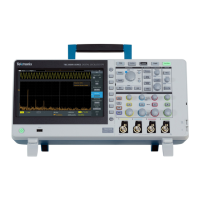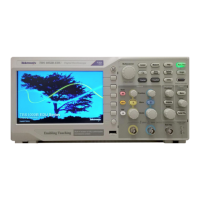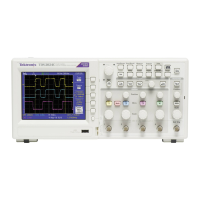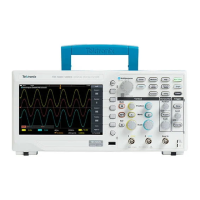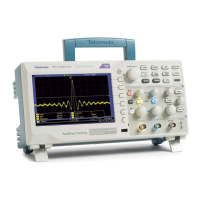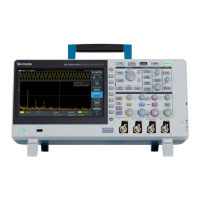
 Loading...
Loading...
Do you have a question about the Tektronix TBS2000 Series and is the answer not in the manual?
| Bandwidth | 70 MHz, 100 MHz, 200 MHz |
|---|---|
| Channels | 2 or 4 |
| Time Base Range | 5 ns/div to 50 s/div |
| Probe Interface | TekVPI |
| Operating Temperature | 0 °C to +50 °C |
| Vertical Resolution | 8 bits |
| Sample Rate | 1 GS/s |
| Memory Depth | 20 kpts |
| Record Length | 20 kpts |
| Display | 9-inch WVGA display |
| Input Impedance | 1 MΩ ±1%, 13 pF ±2 pF |
| Vertical Sensitivity | 2 mV/div to 5 V/div |
| Trigger Types | Edge, Pulse Width, Video |
| Connectivity | USB, LAN |
| Math Functions | Addition, Subtraction, Multiplication, Division, FFT |
Provides information on remotely controlling the instrument via communication protocols and commands.
Explains the formation of set and query commands, including headers, mnemonics, and arguments.
Details the Backus-Naur Form used for describing command syntax and structure.
Outlines general rules for entering commands, including case sensitivity and whitespace.
Explains how to combine multiple commands and queries using semicolons for sequential execution.
Manages waveform acquisition modes, settings, and averaging parameters.
Controls the instrument's Ethernet interface settings and operations.
Manages horizontal axis settings, time base, and record length.
Configures and retrieves automated measurement results.
Defines and manages instrument trigger conditions and settings.
Explains the instrument's status and enable registers for event reporting.
Details the process of how the status and event handling system manages instrument events.
